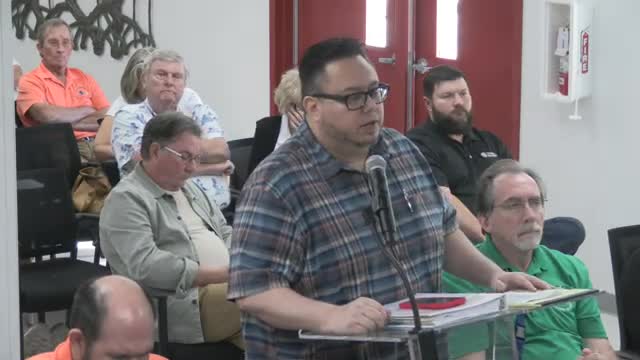Community proposal for housing rejected amid rising costs
October 22, 2024 | Fort Myers Beach, Lee County, Florida
This article was created by AI summarizing key points discussed. AI makes mistakes, so for full details and context, please refer to the video of the full meeting. Please report any errors so we can fix them. Report an error »

During a recent government meeting, significant discussions centered around a proposed development project that has raised concerns among community members regarding its historical context, design compliance, and financial implications.
An extensive analysis was presented, detailing the historical square footage of existing units compared to the proposed designs. The analysis indicated that the new units would range from 440 to 479 gross square feet larger than the historical units, which typically measured between 500 to 600 square feet. The speaker emphasized that while the proposed designs were marketed with appealing figures, they lacked detailed architectural compliance, particularly concerning the Americans with Disabilities Act (ADA) standards.
The speaker, who has a background in interior and hospitality design, highlighted that the proposed units were not compliant with ADA guidelines, suggesting that the design was not created by a qualified architect. This raises concerns about accessibility for future occupants. The analysis proposed that a reduction in unit size by approximately 200 to 250 square feet could still meet the necessary program requirements while ensuring compliance with ADA standards.
Financially, the speaker noted that the cost per unit could significantly decrease if the units were designed with a smaller footprint, potentially saving owners thousands of dollars. The discussion also touched on the possibility of increasing occupancy per unit, which could further enhance the project's viability.
Despite presenting an alternative design proposal aimed at addressing these concerns, the speaker reported that this proposal was dismissed without consideration by the board. This rejection has left community members feeling unheard and concerned about the future of their investments in the property.
The meeting underscored the ongoing tension between development proposals and community needs, particularly regarding historical preservation, compliance with accessibility standards, and financial feasibility for long-term owners. As discussions continue, stakeholders are urged to engage in dialogue to find a balanced solution that respects both the historical context and the needs of the community.
An extensive analysis was presented, detailing the historical square footage of existing units compared to the proposed designs. The analysis indicated that the new units would range from 440 to 479 gross square feet larger than the historical units, which typically measured between 500 to 600 square feet. The speaker emphasized that while the proposed designs were marketed with appealing figures, they lacked detailed architectural compliance, particularly concerning the Americans with Disabilities Act (ADA) standards.
The speaker, who has a background in interior and hospitality design, highlighted that the proposed units were not compliant with ADA guidelines, suggesting that the design was not created by a qualified architect. This raises concerns about accessibility for future occupants. The analysis proposed that a reduction in unit size by approximately 200 to 250 square feet could still meet the necessary program requirements while ensuring compliance with ADA standards.
Financially, the speaker noted that the cost per unit could significantly decrease if the units were designed with a smaller footprint, potentially saving owners thousands of dollars. The discussion also touched on the possibility of increasing occupancy per unit, which could further enhance the project's viability.
Despite presenting an alternative design proposal aimed at addressing these concerns, the speaker reported that this proposal was dismissed without consideration by the board. This rejection has left community members feeling unheard and concerned about the future of their investments in the property.
The meeting underscored the ongoing tension between development proposals and community needs, particularly regarding historical preservation, compliance with accessibility standards, and financial feasibility for long-term owners. As discussions continue, stakeholders are urged to engage in dialogue to find a balanced solution that respects both the historical context and the needs of the community.
View full meeting
This article is based on a recent meeting—watch the full video and explore the complete transcript for deeper insights into the discussion.
View full meeting